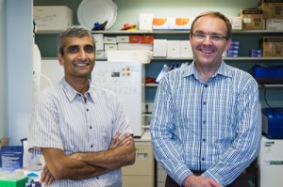International Year of Soils aims to raise soil’s profile

Soil — it’s what’s under our feet. But it’s also what makes sure there is food and water in our stomachs, air in our lungs, clothes on our backs, and a roof over our heads. Soil keeps us from being hungry, thirsty, breathless, naked, and homeless.
Besides just growing crops, soil is vital to securing many of the resources that hold the world together. Soil filters water, contains antibiotic-producing bacteria, and provides a stable platform on which to build homes and businesses, to name just a few ways soils are vital to life.
However, most people don’t know or understand these unique and plentiful benefits of soils, and soil scientists like David Lindbo have been trying for years to figure out why. He says that without an understanding of the importance of soils, the world’s swiftly increasing population will be at risk as food and water supplies are strained.
Czech researchers create comprehensive model to evaluate soil degradation

Soil is strong yet fragile, reliable yet unstable, and resilient yet susceptible to change.
These are all especially true when humans and their need for food enter the mix. Large amounts of evidence show soils are declining worldwide because of poor land use practices and soil management.
Fluoride contamination on the rise in Texas groundwater

Water drips out of almost every facet — and faucet — of Texas. With the state ranking in the top three for groundwater use, it is important for all that water to be clear of contaminants.
However, researchers from Texas A&M AgriLife Research have found that fluoride contamination has been increasing in Texas groundwater since the 1960s. The findings were published in the Journal of Environmental Quality.
Getting to the bottom of soil pipes

We go for hikes in the woods to spend time with nature. We look around to appreciate the mammals, birds, trees, grasses, and flowers of the forest. All without a second thought of the soil underneath the dead leaves and pine needles.
We’re so busy admiring what we see at eye level that we usually don’t think much of the ground we walk on. But luckily someone does.
Scientists at the University of Idaho study what are called soil pipes: horizontal tunnels, or “macropores,” in soil. The presence of soil pipes can affect how water drains or flows through the soil and play a role in soil erosion and hillslope stability.
You probably ate fungus today

That salad you had for lunch. Yeah, it had fungi in it.
That celery stick you barely nibbled that came with your basket of wings last night. It had fungi in it too.
And it’s not just the plants you eat; the grass you walk on, the trees you walk under, and the flowers you admire all contain fungi. Actually, every plant tissue ever documented has fungi living inside it. They are called endophytes.
“Essentially most of us think of a plant as just a plant, but these plants are crawling with fungus,” said Christine Hawkes, associate professor of integrative biology in the College of Natural Sciences. “Every leaf, every stem, every root is full of fungus.”
Cracking the genetic code of tumors

When patients are diagnosed with glioblastoma, one of the worst forms of brain cancer, their options are limited.
Even after surgically accessing the brain to remove as much of the tumor as possible and applying intense chemotherapy, the prognosis is poor. The average survival time is about 14 months.
